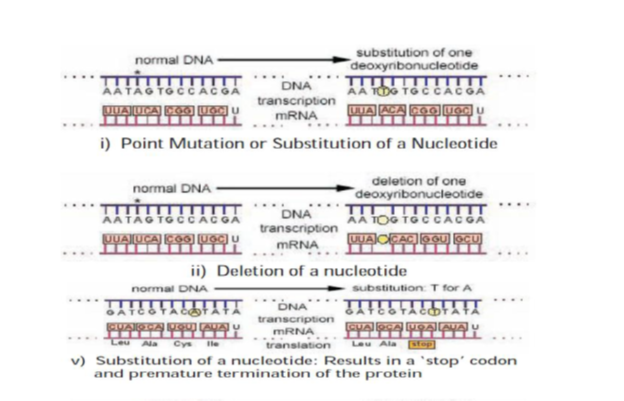Genetics: Mutation fully explained (Part 2)
Good day Steemians, and welcome to my blog.
Welcome to another episode in the Mutation series.In Genetics: Mutation fully explained (Part 1) we discussed mutation, the types of mutations, mutagens, and the type of mutagens which we were unable to complete.
As a quick reminder, Mutation is any change in sequence of the bases in DNA, while mutagens are chemical or physical agents that induce mutation.
*Physical agents contd*
Ultraviolet light
The mutagenic range of ultraviolet light lies between wave length 200 and 300 nm. ‘Low pressure’ UV lamps used for mutagenesis emit most of their rays in the 254 nm region.
The suspension of cells or spores to be mutagenized is placed in a Petri dish 2-3 cm below a 15 watt lamp and stirred either by a rocking mechanism or by a magnetic stirrer. The organisms are exposed for varying periods lasting from about 300 seconds to about 20 minutes depending on the sensitivity of the organisms. Since UV damage can be repaired by exposure to light in a process known as photo-reactivation all manipulations should be conducted under a special light source such as 25 watt yellow or red bulbs. A proportion of the organisms ranging from about 60–99.9 % should be killed by the radiation.
The initial concentration of the organisms should also be in the order of 107 per ml. Radiation is conducted in dark area with certain distance for certain duration.
The main effect of ultraviolet light on DNA is the formation of covalent bonds between adjacent pyrimidine (thymine and cytosine) bases.
Thymine is mainly affected, and hence the major effect of UV light is thymine dimerization, although it can also cause thymine-cytosin and cytosin-cytosin dimers.
Dimerization causes a distortion of the DNA double strand and the ultimate effect is to inhibit transcription and finally the organism dies.
Schematic Representation of Thymine Dimerization by UV Light on DNA

Source
Some chemical mutagens, such as nitrous acid and nitrosoguanidine work by causing chemical modifications of purine and pyrimidine bases that alter their hydrogen bonding properties.
For example, nitrous acid converts cytosine to uracil which then forms hydrogen bonds with adenine rather than guanine. These chemicals act on the non-dividing cell and include nitrous acid, alkylating agents and nitrosoguanidine (NTG) (also known as MNNG).
Nitrous acid: This acid is rather harmless and the mutation can be easily performed by adding 0.1 to 0.2 M of sodium nitrate to a suspension of the cells in an acid medium for various times. The acid is neutralized after suitable intervals by the addition of appropriate amounts of sodium hydroxide. The cells are plated out subsequently.
Alkylating agents: These are compounds with one or more alkyl groups which can be transferred to DNA or other molecules.
Many of them are known but the following have been routinely used as mutagens: EMS (ethyl methane sulphonate), EES (ethyl ethane sulphonate) and DES (Diethyl sulphonate).
They are liquids and easy to handle. Cells are treated in solutions of about 1% concentration and allowed to react from ¼ hour to ½ hour and thereafter are plated out. Experimentation has to be done to decide the amount of kill that will provide a suitable amount of mutation. While some are carcinostatic (i.e., stop cancers), some are carcinogenic and must be handled carefully.
To be continued in the next post....
References
NLM
Yourgenome
Berkley
nature
Byjus
iugaza
Kindly Follow, Upvote, Resteem, and Comment if you like this post
